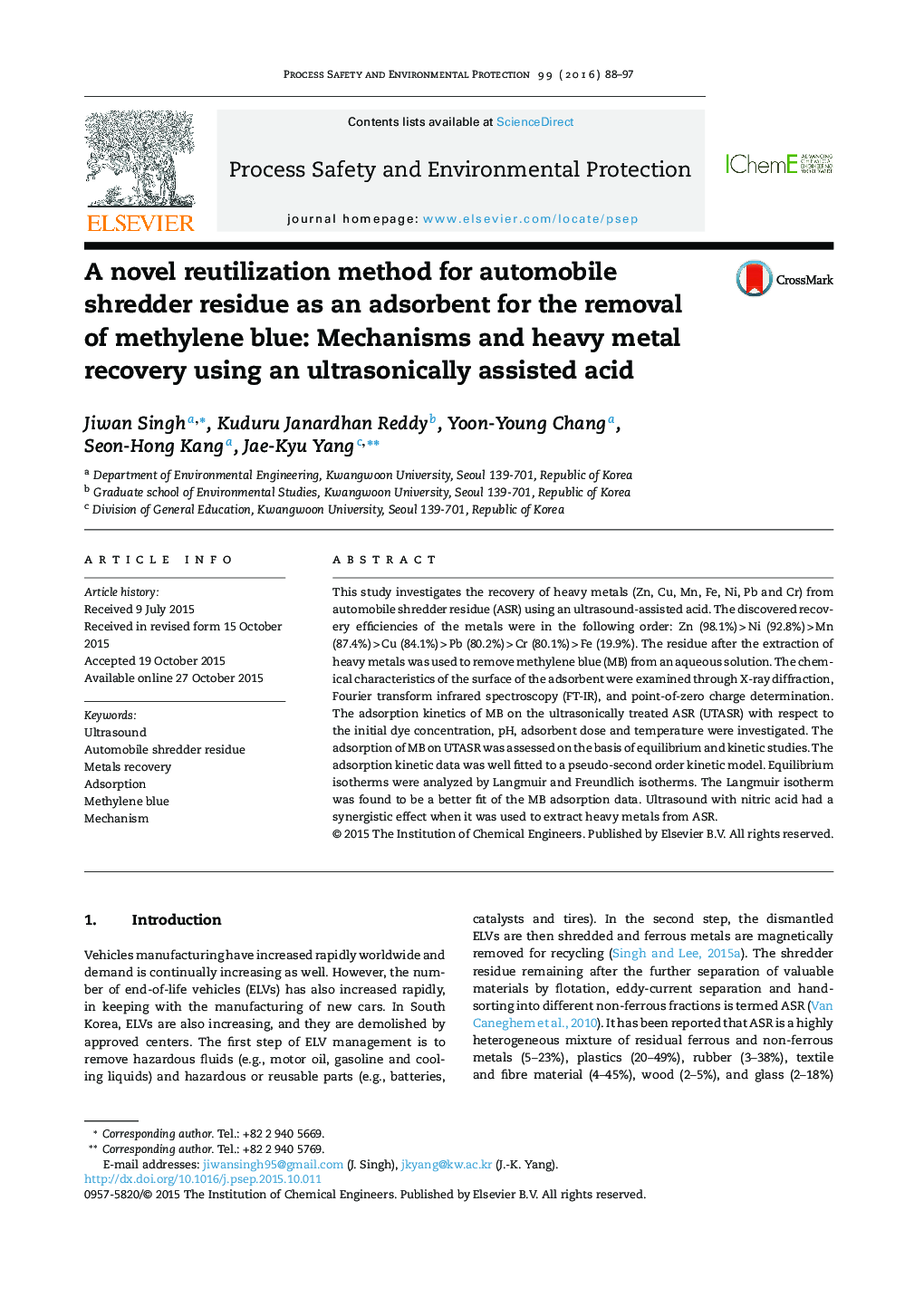| Article ID | Journal | Published Year | Pages | File Type |
|---|---|---|---|---|
| 588196 | Process Safety and Environmental Protection | 2016 | 10 Pages |
•Ultrasound with nitric acid had synergistic effect on recovery of metals from ASR.•The residue remaining after metal recovery was used for the removal of MB.•The adsorption kinetic data was well fitted to a pseudo-second kinetic model.•The Langmuir isotherm was found to be a better fit for the adsorption data of MB.•Mechanisms for heavy metal recovery and the adsorption of MB were discussed.
This study investigates the recovery of heavy metals (Zn, Cu, Mn, Fe, Ni, Pb and Cr) from automobile shredder residue (ASR) using an ultrasound-assisted acid. The discovered recovery efficiencies of the metals were in the following order: Zn (98.1%) > Ni (92.8%) > Mn (87.4%) > Cu (84.1%) > Pb (80.2%) > Cr (80.1%) > Fe (19.9%). The residue after the extraction of heavy metals was used to remove methylene blue (MB) from an aqueous solution. The chemical characteristics of the surface of the adsorbent were examined through X-ray diffraction, Fourier transform infrared spectroscopy (FT-IR), and point-of-zero charge determination. The adsorption kinetics of MB on the ultrasonically treated ASR (UTASR) with respect to the initial dye concentration, pH, adsorbent dose and temperature were investigated. The adsorption of MB on UTASR was assessed on the basis of equilibrium and kinetic studies. The adsorption kinetic data was well fitted to a pseudo-second order kinetic model. Equilibrium isotherms were analyzed by Langmuir and Freundlich isotherms. The Langmuir isotherm was found to be a better fit of the MB adsorption data. Ultrasound with nitric acid had a synergistic effect when it was used to extract heavy metals from ASR.
Graphical abstractFigure optionsDownload full-size imageDownload high-quality image (171 K)Download as PowerPoint slide
